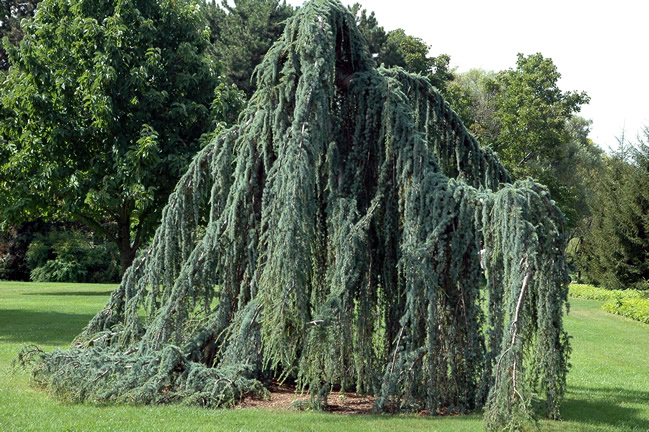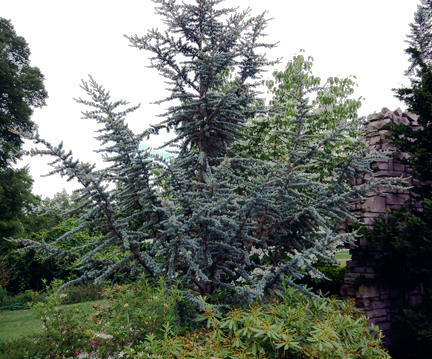| General Description | A large tree that is pyramidal when young that spreads out with age with a nice blue colour. The cones are shaped like a barrel and the bark is smooth when young turning more rigid with age. |
| ID Characteristic | This tree has a distinct branching habit and form. It also has spirally or rosette needles on the spurs and finally has an upright cone in the shape of a barrel which is typically found at the top of the tree. |
| Shape | Pyramidal in shape with typical horizontal branching. |
| Propagation | Seeds show no sign of needing dormancy but pre-chilling or cold stratification at 1-5°C is recommended for three weeks. |
| Cultivation | Prefers moist soils but can easily withstand dry sandy soils. Does not transplant easily and must be protected from winter winds due to the lack of hardiness in this species inour zone. It is also very tolerant of urban conditions and can withstand pollution. |
| Pests | Tip blight, root rots, black scale and Deodar weevil. |
| Habitat | Found on the slopes of the Atlas Mountains in northern Africa at about 1000-2000 m. |
| Bark/Stem Description | The bark is grey and smooth for the first 20–30 years of the trees life, at which point it then starts to develop a plate like pattern. |
| Leaf Description | Needles are 1–2.5 cm long and are slightly curved. The colour varies from silver to blue and the needles are arranged spirally on long shoots and in rosettes on short spur growth. |
| Flower Description | Monoecious and appear from June through September. The male flowers are erect and typically found on the lower portion of the tree while female flowers are green to purple and are found on the lower half of the tree. |
| Fruit Description | Cones are found upright along the branches and are 7.5 cm long taking two years to reach maturity. They are bluish-green when young and ripen to brown. |
| Colour Description | A beautiful blue coloured tree that can suffer winter burn giving it an unpleasant brown appearance. The bark is grey and the cones are bluish green at youth and brown at maturity. |
| Texture Description | The needles are relatively soft to the touch. The bark is smooth when young becoming rough with age. The cones are rather flat and smooth. |

